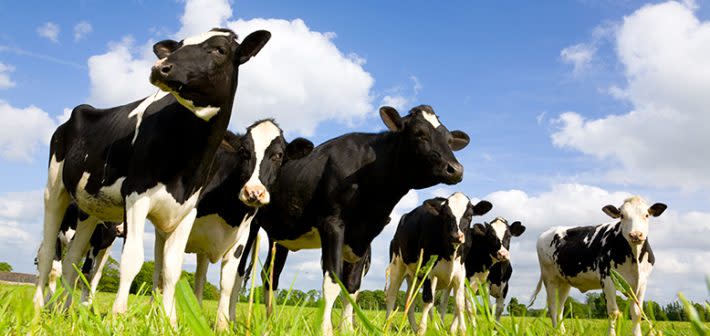LIVESTOCK: OFFERS FROM THE AUTUMN CATALOGUE
Here are our leading offers for Livestock from the Autumn Catalogue. Bonus items will be available in-store at your local AIRR member…
Nationwide shipping! Now with Express shipping option as well. Click here for details.
Article Courtesy Zoetis

Dairy heifers are prone to a variety of common diseases, some of which can be fatal or cause considerable suffering. These diseases can be costly to treat and can significantly affect the growth rates of affected heifers and their subsequent health, fertility, and productivity once they enter the milking herd. Fortunately, many of the diseases affecting heifers can be prevented or their effects minimised. Learn more about how you can protect your heifers from common diseases and help keep them healthy and growing.
BOVINE RESPIRATORY DISEASE
Bovine Respiratory Disease (BRD) is the most common cause of illness and death in feedlot cattle triggered by a complex interaction of stress factors, viral and bacterial infections. A range of factors can predispose cattle to BRD. These include stress caused by weaning, transport and social restructuring, age, immunological background, dehydration and change of diet. Whilst not as prevalent in dairy herds, BRD can still cause significant outbreaks in dairy calves, heifers, and in the milking herd.
These outbreaks can result in production losses, reduced growth rates and mortalities. Weaned dairy heifers are exposed to some of the same risk factors as beef cattle for developing BRD. Housing of newborn dairy calves and daily mixing of dairy cows in milking sheds also add unique risk factors for BRD in dairy herds.
INTESTINAL WORMS
Uncontrolled parasitic diseases impair the health, reproduction, growth and milk production of cows. Meat and Livestock Australia have also concluded that, “of the endemic diseases that affect livestock in Australia, parasitic diseases have the largest financial impact on farm productivity1.”
The modern dairy system can promote the proliferation of parasites. For example, roundworm eggs deposited onto pasture develop into larvae, ready for infection in 7-14 days, which in a rotational grazing system means that larvae are ready to infect cows during the next visit. Higher stocking rates and dedicated calf rearing areas on dairy farms may also contribute to increased exposure to parasite larvae.
CLOSTRIDIAL DISEASES
Although easily preventable, an outbreak of clostridial disease can significantly impact your herd, your financial investment and your livelihood. Treatment is usually not practical as rapid death of most affected animals is the primary sign of clostridial diseases and response to treatment is poor.
The economic impact of clostridial diseases can be devastating. During outbreaks, the losses can be dramatic and extensive. Often, farms lose one or two animals each year without realising it.
PESTIVIRUS
As with calves, the impact of pestivirus on heifers is through the poor performance of PI calves and the infection of healthy non-PI calves, subsequent immunosuppression and increased risk of other disease problems. PI replacement heifers may introduce pestivirus into your cow herd or infect other heifers placed with them from different breeding groups. Where heifers are being sent away to be grown out on other farms, PI heifers will also infect other heifers placed with them.
Vaccinating a PI heifer with Pestigard will not cure the infection and it may be necessary to test your heifers to identify and remove PI animals. Consult your veterinarian on the cost benefit of doing this in your herd. The other important thing with replacement heifers is to begin to plan a vaccination program to ensure that they are protected against foetal infection with pestivirus when mated. Take advantage of the flexible inter-dosing interval with Pestigard which allows the first two doses of the vaccine to be given between 4 weeks and 6 months, allowing vaccination to coincide with other management activities.
COCCIDOSIS
Calves are particularly vulnerable to coccidiosis, which is caused by microorganisms called coccidia. Infection can result in watery faeces which can slow growth rates and lead to failure of calves to wean at their optimal age and weight.
Left untreated, coccidiosis can progress to blood-stained diarrhoea (scours) and even death.
LEPTOSPIROSIS
Leptospirosis is a serious bacterial disease in dairy calves that can cause jaundice (liver disease), blood-stained reddish-brown urine, anaemia, fever and even death. In cows, leptospirosis can significantly reduce milk production and cause abortions or the delivery of weak or stillborn calves, which will have a major impact on productivity.
Infection can spread through a herd via contact with body fluids from infected animals, or through contaminated water supplies, pasture and soil. The organism can even be spread by flooding after heavy rainfall.
But leptospirosis isn’t just a problem for dairy herds. Infected animals can pass the infection to farmers and their families, resulting in severe flu-like symptoms, headaches, chills, and muscle pains. These symptoms can persist for weeks to months.
Great range - quick and secure delivery
Buy securely online and pickup at your local store
Call your local store and come on down to pickup